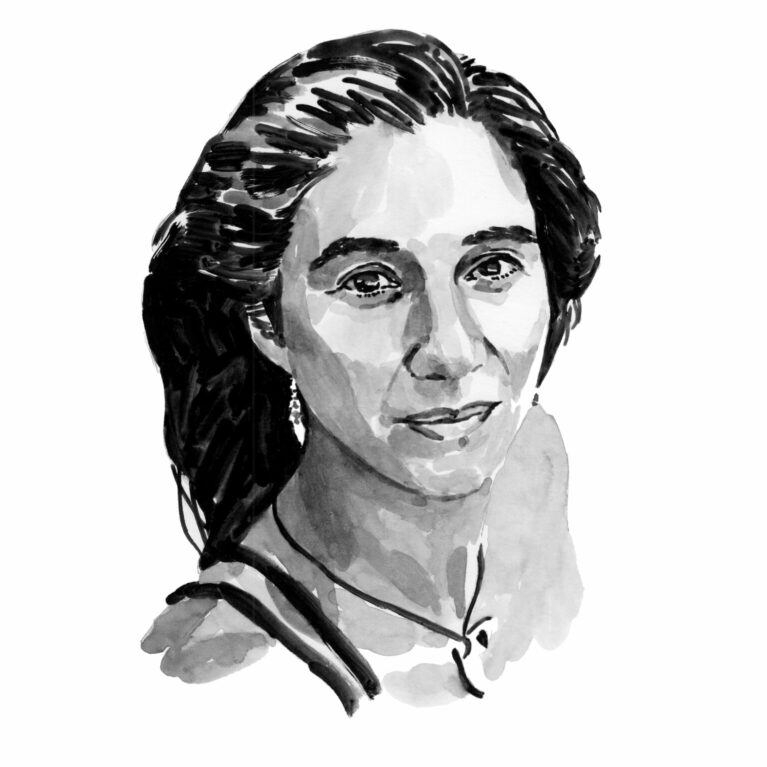Adriana Gonzalez-Pestana

Who I am
I grew up in Lima, Peru’s capital and largest city, and spent my school holidays at a beach town called Totoritas, where I nurtured a fascination for the ocean. Those play-filled summers in a rocky bay were a refuge from the chaotic city, and the transcendental moments I experienced in nature, charged with freedom and curiosity, were the roots of the love and respect for life that came to determine my purpose. I belong to the first cohort of marine biologists in Peruvian history. During a three-month internship in the Galápagos Marine Reserve, I embarked on a life-long journey towards the conservation of one of the world’s most endangered marine predators. For my undergraduate and Master’s theses in fisheries biology and management from James Cook University, Australia, I studied the life history and ecosystem role of the smooth hammerhead shark off northern Peru and the threats to it. For the past decade, my efforts to conserve endangered shark and ray species have involved education and research, and I have about 30 scientific publications to my name. In a bid to identify how best to support a socio-ecological system that uses resources sustainably, I have also expanded my thinking to include social sciences. I’m involved in the Important Shark and Ray Areas (ISRA), an IUCN project that is mapping globally critical habitats for sharks, and am an adjunct professor at Universidad Cientifica del Sur, where I teach and assess future marine biologists. As a PhD student at Charles Darwin University, Australia, I am focusing my research on the identification and monitoring of critical shark habitats in the Western Indo-Pacific through citizen science. I also used science-based outdoor activities and storytelling to encourage children from coastal communities to identify with the environment.
Where I work
Timor-Leste, in South-East Asia, lies in the Coral Triangle, an area that boasts one of the highest numbers of marine species in the world. This nation is unique for shark and rays, as it is located between Australia and Indonesia, the two countries with the highest global diversity of cartilaginous fishes.
Timor-Leste’s northern and southern coasts have distinctive ecosystems. The northern coast is characterised by clear, calm waters with coral reefs along a narrow coastal shelf. These waters are influenced by the Indonesian Throughflow, which contributes to marine productivity by bringing nutrients from the Pacific Ocean into the Indian Ocean. The southern coast, on the other hand, has a wider shelf with turbid waters, high wave energy and extensive mangrove systems. As a result of seasonal rainfall and the country’s mountainous terrain, several rivers flow into the sea, creating a variety of marine habitats that support diverse shark and ray species.
The recent independence of Timor-Leste and the new nation’s limited resources mean that there is little understanding of sharks and rays in the marine ecosystem here. Basic information such as the distribution of species and their habitat use, the threats to them, and their uses and value is, for the most part, lacking. The only fishing is small-scale and artisanal, on vessels that remain within two kilometres (1.24 miles) of the coast and use various types of gear. There is no domestic commercial fishery, although in the past these waters have been overfished by foreign commercial fleets. Marine science and management are in their infancy in Timor-Leste, which presents us with an exciting opportunity to conduct research and engage with the local communities on conservation initiatives.
What I do
My PhD research focuses on the identification and monitoring of critical shark and ray habitat in the Western Indo-Pacific through citizen science. This research is based on ISRA, a project that is mapping critical habitats for sharks and rays through a set of criteria to identify these important areas.
As part of my PhD, I will apply ISRA criteria in Timor-Leste waters to develop a baseline for sharks, rays and chimaeras that will include a catalogue of the species and the identification of critical habitats. The information will be collected by interviewing key players – experienced fishers, shore-based fishing monitors, professional and recreational divers, and free divers – and by monitoring key landing sites. A citizen science project will be launched to develop the baseline and to engage with the local community to promote research and conservation. Workshops and training will also be provided for government authorities, enumerators and universities to promote capacity building.
